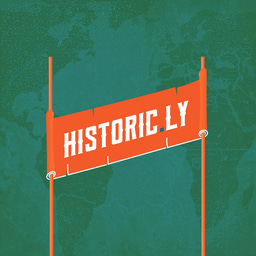The Red Scare: From the Guilded Age to the Modern Times - Part 1
Description
While the election results came in the USA, we thought we should look at something far more important than elections: The labor movement. The labor movement doesn’t take a break and it has given us concrete results such as the weekend, overtime pay, minimum wage laws, and worker protection. When the government is hostile to the interests of the working class, the only way to advance the interests of the working class is through a strong labor movement. With this, we present our series:
Historic.ly is a reader-supported publication. To receive new posts and support my work, consider becoming a free or paid subscriber.
Although, most historians usually use term “The First Red Scare,” referring to the events in following the 1917 Bolshevik revolution where strikes, stoppages and even bombings were blamed on an internal “fifth-column” of Bolsheviks However, the history of anticommunism in the United States goes back further than that. All the way back to when communism was first defined by Marx in the Communist Manifesto.
Anti-Communism is more than just a sentiment, it is a series of tactics used by by people in the eternal class conflict. There are those who want to improve the lives of the workers and those who want to keep the status quo. Anti-communist tactics are used by those who want to keep status quo. These tactics have been used ever since the first revolts of the oppressed: enslaved people and they have been molded and perfected until today.
In order to do this, they deploy tactics that include intimidation, manipulation, deception, outright lies, and even murder. In order to take on the powerful, the powerless must be united in a strong, indivisible front. One of the most useful tactics they used is the divide and conquer tactic since the days of the slavery.
The slave owning colonists figured out that they needed to pit the enslaved, poor whites, and the indigenous people against one another so those groups wouldn’t turn on them. They offered concessions to the poor whites and put them in positions of “middle management” like being the overseer of enslaved people in a field or offering awards for them to act as a police force that would be used to hunt down escaped slaves which were considered property for the slave owner of course. This was the base and still very much the mindset of our current police force. They created whiteness, a merging of pan-european identities, in order to break any solidarity between poor european immigrants and enslaved Africans.
“Othering” a group or an ethnicity was a common tactic used throughout the labor movement. Throughout the 1800s large groups of immigrants, mainly from Europe, immigrated to the USA. 1848 was a hard year for the people of both Ireland and Germany. Ireland had the ongoing English engineered famine and cultural and religious oppression under the English. In Germany, a revolution of an alliance of liberals, socialist, and the nationalists lost against the conservative rule. Many of the German immigrants that made their way to the US brought with them Marx’s new ideas on socialism.
The media played a big part as well. Newspapers were written through the eyes of the state and capitalists. Socialists were often portrayed negatively in the media, depicted as un-American and a threat to the capitalist system. This portrayal fueled public distrust and hostility toward socialist ideas.
Two years later, in August 1850, during the 1850 Garment Workers Strike in that left two German tailors dead in August of that year, the papers took great umbrage of the “violent Germans” destroying property and wrote of how the police saved the day with the use of their clubs while breaking up the 300 tailors protesting not being paid fairly. Little was said about the two men who died at the end of those clubs.
In this strike alone, we start to see some of the anticommunist tendencies. The media made sure everyone knew these were “German tailors” and that the Germans were “prone to violence”. Therefore, the first tactic that is often used is to play upon national and ethnic identities to “other” people involved in strikes as a way of encouraging workers who have much more in common with the strikers to turn away from them.








